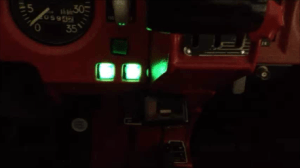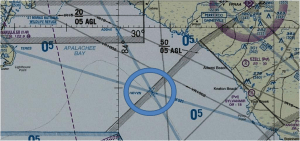There are sports, there are professions, then there are sojourns.
Astronauts are sojourners, as are pilots and mountain climbers and underwater divers. While the sojourner may have carefully planned his sojourn, warding off potential trouble by using good equipment and training, it is the return to normalcy that oftentimes presents the greatest and most unexpected danger.

Mountain climbers who reach the top of their mountain, don’t always make it safely back down. Astronauts reentering the atmosphere understand the risk of return all too well.
For scuba divers, return to the surface can be accompanied by decompression sickness and air embolism. When diving in cold water, the very act of rising towards the surface can induce a scuba regulator to free flow, spilling a precious gas supply.
For pilots the sojourn can end badly on landing. This fact has been in the news lately, where seemingly inexplicable crashes occurred in large transport aircraft. I shake my head and wonder why, knowing full well that once you take a sojourn for granted, it can devour you. I also know full well that I am not immune.
I was recently reminded of that during a short 34-mile flight returning a retractable gear aircraft from maintenance back to my home base, Panama City, FL. Most pilots know that, ironically, aircraft maintenance can be risky. While maintenance on diving equipment or airplanes is certainly a critical part of safe operation, at the same time it is an opportunity for a mechanic to inadvertently damage a critical component.

I have seen a maintenance-related failure of a scuba regulator, and I was about to see it with my aircraft as I followed a business jet towards a landing at our local airport. To keep traffic flowing smoothly I kept my speed up on approach until close to the runway. When I finally slowed enough to drop the landing gear I saw two green “gear safe” lights rather than the expected three. My main gear seemed to be down and locked, but the nose wheel lock indication was not glowing that reassuring green.
“Tower, I have a problem with my gear. I need to leave the area and sort out the problem.”
I left the airport airspace and spent a full hour burning fuel, running through all emergency checklist items, pulling G’s to help the gear lock down and waiting for a Southwest Airlines flight to arrive. The local airport, which receives quite a bit of commercial jet traffic (Delta and Southwest) only has one runway. If my gear collapsed on touch-down, that single runway would have been shut down for an hour or more, and arriving flights would have to land elsewhere. There are not a lot of good alternate airports near Panama City.
The sun was getting low, and I did not want to make that landing at night. Besides, my wife was below, waiting anxiously for whatever was going to happen. She was due to pick me up at the hangar, but she and I both knew the aircraft might not make it far past the touchdown point on the runway.
After flying past the tower twice and having them inspect the gear with binoculars, the tower controller said the gear looked down, but I knew there was no way to tell if it was down and locked. If the nose gear was not locked, it would collapse on landing.
Fortunately I was alone in the cockpit so I could come to grips with what I was about to do without the distraction of worried passengers. I announced my intentions to land, and on my last circuit of the field I saw the crash rescue truck and fire truck pulling into position along the runway. That was a sight no pilot ever wants to see.
As I turned towards the runway I reviewed the landing checklist one last time, and then I was ready. As I turned final it was time to get it over with. Whatever would happen would happen, and there was nothing more I could do about it.
Approaching the runway and ready to land, my mind was focused on only one thing — making the landing as smooth as possible.
The main wheels squeaked as they touched the concrete, ever so gently, and with steady back pressure on the yoke I kept the nose high, sparing the nose gear as long as possible as the plane slowed.
When gravity overcame the aerodynamic lift on the nose, the wheel settled to the runway — and rolled.
My first word to the tower was, “Thank God!”
“Indeed”, they replied. They had been holding their breath as well, as they later told me.
The next day when the mechanics drove in, it only took them five minutes to adjust a tab on the nose gear down-lock switch. Such a simple fix for such a lot of drama.

Now that I’ve had time to reflect on the incident, I’ve come to appreciate the valor of the silver-suited firefighters who approached me after the landing, the firefighters who are prepared to thrust themselves into the flames to rescue those whose sojourns have gone awry. I was also appreciative of the calm-voiced air field controller whose only weapon against calamity was the calm tone of his voice.
Calm is a good thing when you’re trying to land a plane with all the tenderness of putting a candle on a birthday cake.





